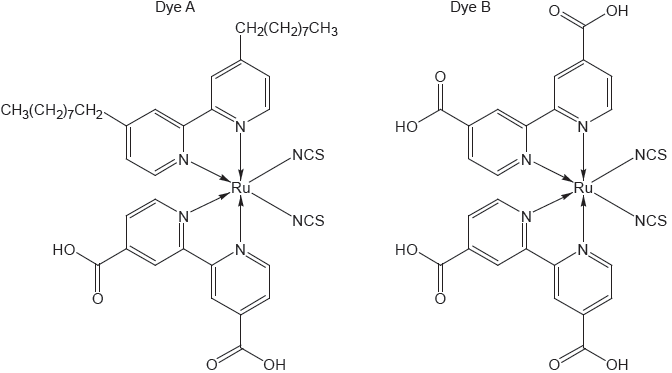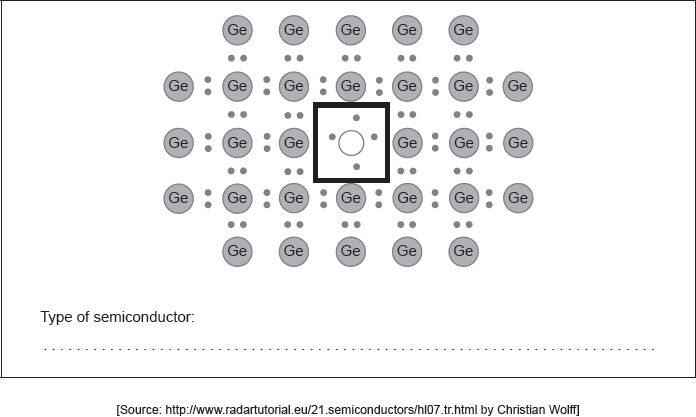| Date | May 2019 | Marks available | 1 | Reference code | 19M.3.hl.TZ1.18 |
| Level | HL | Paper | 3 | Time zone | TZ1 |
| Command term | Suggest | Question number | 18 | Adapted from | N/A |
Question
This question is about solar cells.
Some solar cells use photovoltaic semi-conductors. Compare, giving reasons, the electrical conductivity of metals and semi-conductors as temperature increases.
Suggest one advantage of a dye-sensitized solar cell (DSSC) over a silicon based photovoltaic cell.
Markscheme
metal conductivity decreases AND semi-conductor conductivity increases [✔]
metal: collisions between «already free moving» electrons/vibrating lattice ions and electrons increase [✔]
semi-conductor:
provides sufficient energy for electrons to move to conduction band
OR
allows semiconductors to ionize forming freely moving electrons [✔]
Any one of:
cheaper [✔]
uses light of lower energy [✔]
plentiful resources [✔]
renewable resources [✔]
use of nanoparticles provides large surface area exposure to sunlight [✔]
can absorb better under cloudy conditions [✔]
better conductivity [✔]
more flexible [✔]
Examiners report
Candidates struggled to express themselves adequately in comparing the change in electrical conductivity of metals and semi-conductors as temperature increases. Many scored 1 mark for stating the effect of increasing temperature, but very few scored any marks for the explanation.
Generally answered well with most candidates able to suggest one advantage of a DSSC over a silicon based photovoltaic cell.



